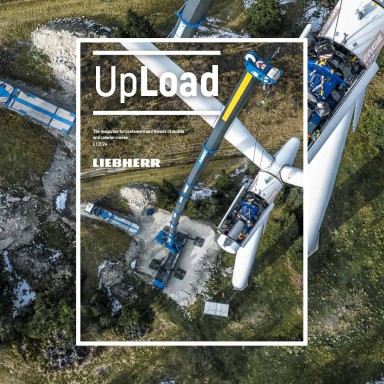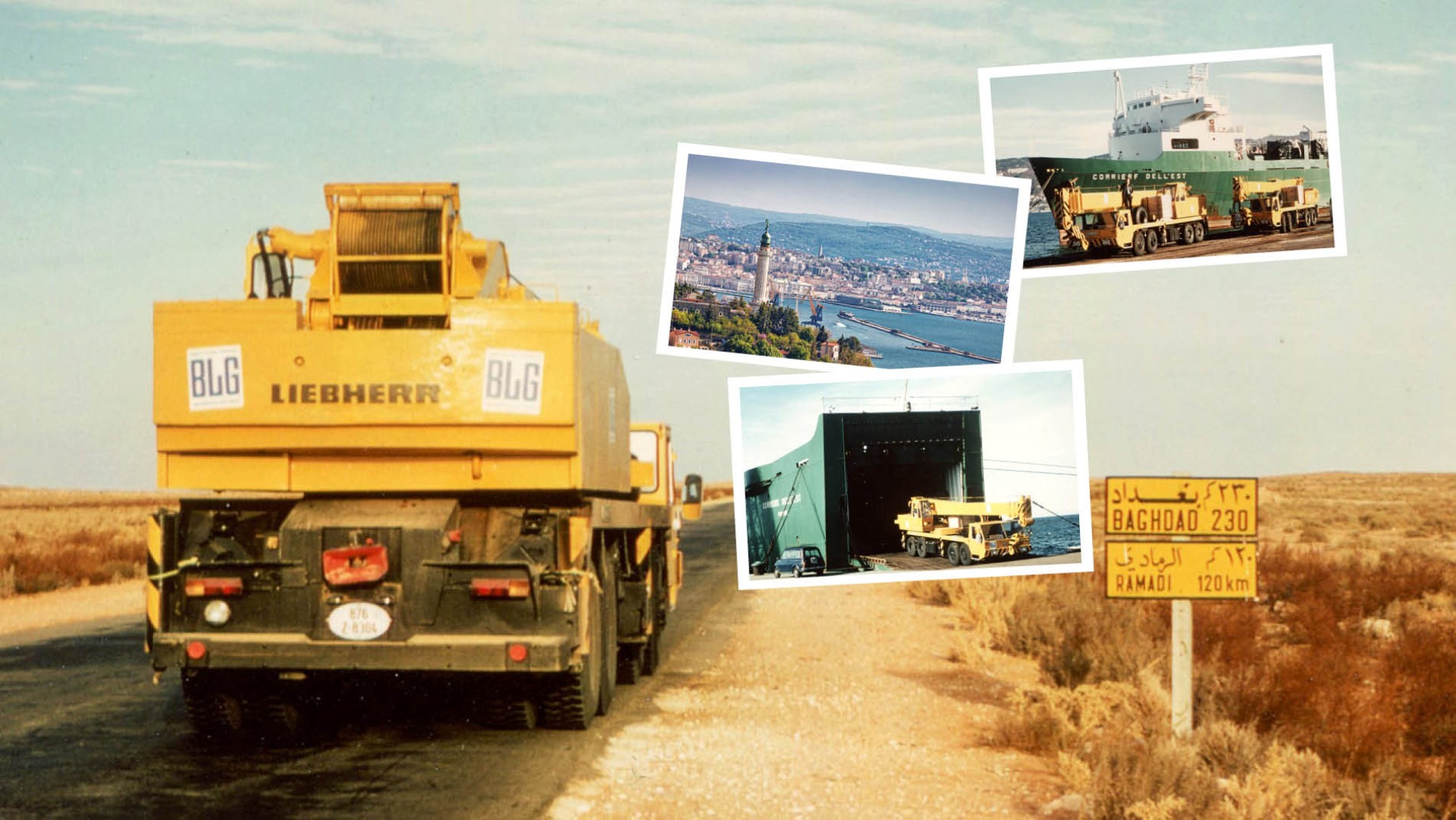
5 minutes - magazine 01 | 2024
Look back
From Ehingen to Baghdad: Heavy transport around 50 years ago
Through water and dust – a logistics adventure
From Ehingen to Trieste via the Brenner Pass, by ship to Aqaba in Jordan and via the capital Amman, through the desert to Baghdad – within two and a half weeks in 1975, two telescopic cranes traversed Europe and the Orient to reach a customer in Iraq. The LT 1030 and an LT 1045 were accompanied by a three-man transfer team including a VW bus service vehicle.
Our colleagues from the company group archive have discovered an exciting travelogue about this transfer. The text was written by an employee of the Basel-based haulage company at the time. The end customer who bought and used the two cranes was an Iraqi state-owned construction company responsible for infrastructure projects in the country.
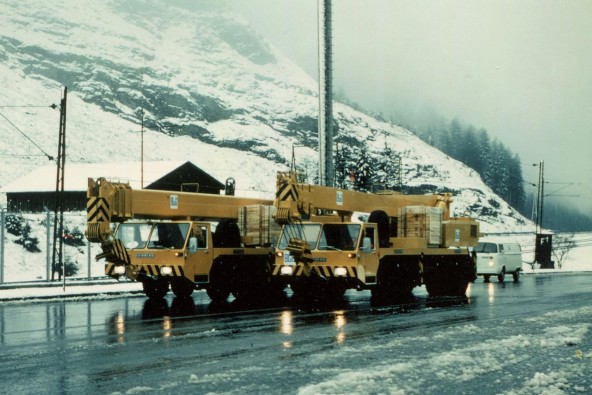
Richard Rijbroek - Environmental manager at Denys
16 November 1975
On a Sunday evening in November, our three drivers Luginbühl, Vecchio and Müller [from a Basel-based haulage company, editor’s note] board the train to Ulm. They are put up at the closest hotel and are picked up the next day by Mr Metzger from the Liebherr plant in Ehingen. There they familiarise themselves with their vehicles and the final preparations for the long journey can be made together with the employees of the shipping company.
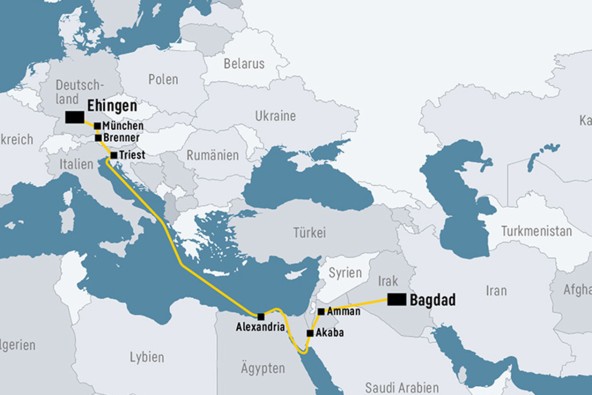
17 November
In the late afternoon of 17 November 1975, the starting shot is fired, a moment we have all been longing for – the cranes and the VW bus roll away in the direction of Baghdad. A few hours later we pass through Munich. Shortly after dinner, they arrive at the motorway customs office in Kiefersfelden, where the customs agent is already waiting for them. After crossing the border into Austria, the drivers can rest for the first time. They spend the night and continue their journey to Innsbruck the next morning.
18 November
All three vehicles are serviced there. That same afternoon, in light snow, we climb the Brenner Pass. The drivers are aware that the snow is practically the only thing that could stop them, which is why they try at all costs to cross this pass before the snow covers it. There is only a little slush on the Europa Bridge, but the rest of the route is only unpleasantly wet and offers no serious obstacles. At the Brenner Pass, the Italian customs officer simply puts his stamp on the papers and we drive down and through South Tyrol. Trieste must be reached on the 19th in the morning so as not to miss the departure of the ship. However, the drivers are not yet aware that the ship’s departure has now been postponed by a day.
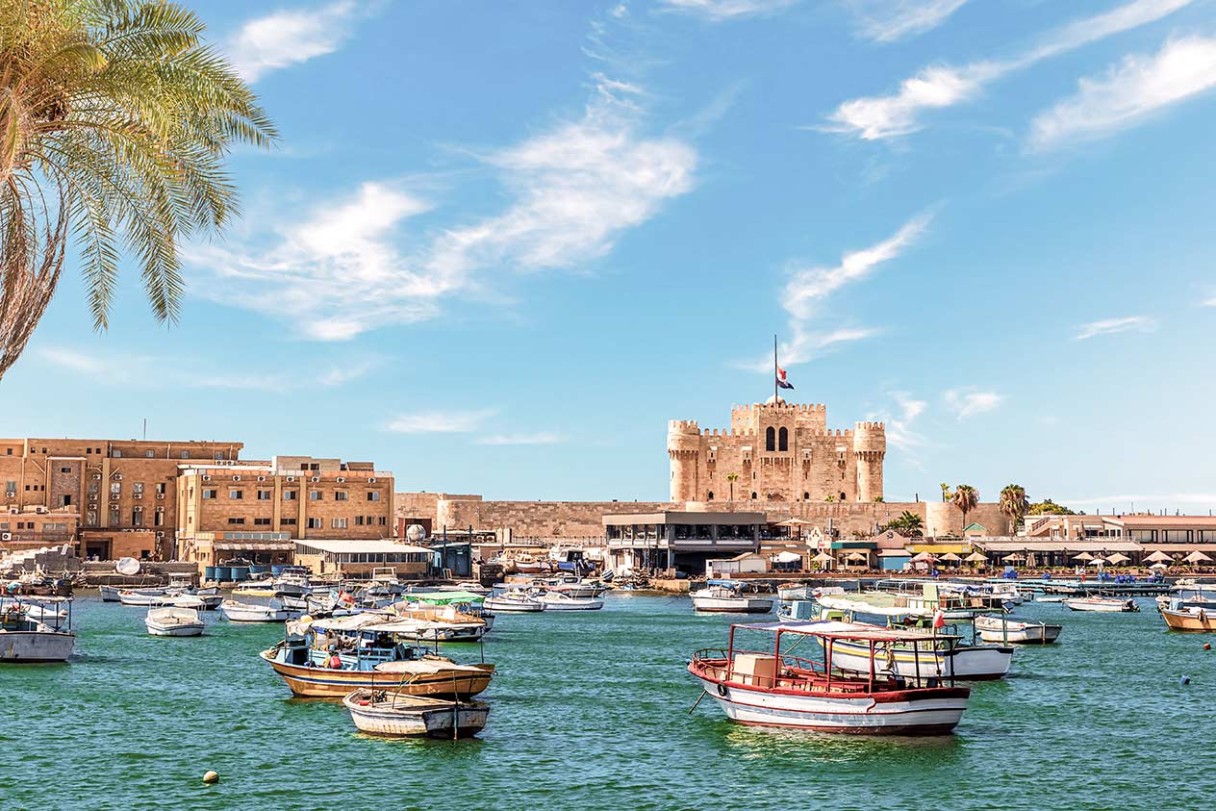
19 November
The ro-ro ship “Corriere Dell’Est” docks in Trieste in the evening of the same day and the vehicles can be embarked on the 20th after customs formalities have been completed. For this purpose, the ship opens its aft side, which is folded down to the pier. The cranes and the service vehicle travel on the resulting bridge into the interior of the ferry.
20 November
The next day, the captain weighs anchor and Trieste soon disappears into the haze. The weather forecast doesn’t exactly bode well, which doesn’t necessarily instil confidence in our landlubbers, especially as it’s not a huge ship. Near the island of Crete, the forecast storm promptly breaks out, causing not only nausea among the chauffeurs but also a deep frown on the captain’s face. He decides to call at the harbour of Heraklion to wait for the storm to pass. At the first relief we set off again, but only a few nautical miles out into the Mediterranean. The winds are still too strong for the captain’s taste, so he heads for the harbour a second time. This game is repeated once more and only on the third attempt is the course set for Alexandria. These manoeuvres obviously didn’t sit well with Walter Luginbühl from our party. But looking back, he only laughs about this incident.
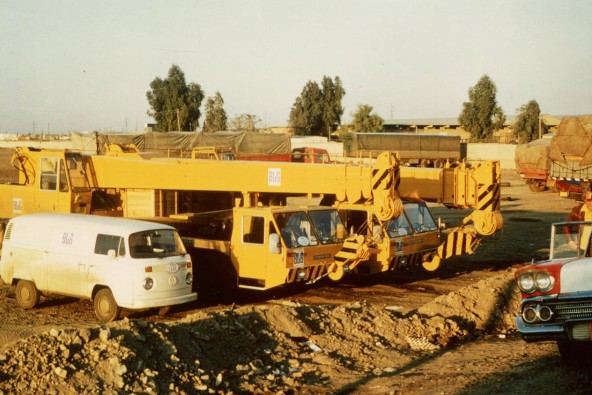
28 November
In Alexandria, which will call on the 28th, some of the cargo can be unloaded and the drivers have the opportunity togo ashore for a short time. They were particularly taken aback by the intrusiveness of the population in general and the children in particular. The loading and unloading of ro-ro ships takes very little time, so the shore leave in Alexandria comes to a quick end. After this stopover, the journey continues directly through the Suez Canal to Aqaba.
The Suez Canal only allows passage in one direction. The ships can only cross each other in the Great Bitter Lake. The “Corriere Dell’Est” travels in convoy with nine other ships from Port Said to Suez. Numerous vendors come on board with their souvenirs and other goods, and they swarm the passengers. These vendors commute daily between Port Said and Suez. To the left and right of the Suez Canal lie burnt-out tank wrecks and bunkers that bear witness to the fierce fighting of the last Middle East war.
30 November
The Sinai Peninsula is circumnavigated and on 30 November the “Corriere Dell’Est” docks in Aqaba. Once the freight has been unloaded, the haggling over customs clearance begins. Of course, the handling cannot be compared with Central European conditions. What’s more, the arrival of the ro-ro ship presents the poor customs officers and customs agents with a completely new set of circumstances. This ship is the first of its kind to dock in this Jordanian harbour. Moreover, in Arabia, as in other parts of the world,time does not exactly play a very important role. Three days passed before the drivers were able to get behind the wheel again.

2 December
The next destination is Amman, the capital of the Hashemite Kingdom. The Jordanian roads pose no problems. They are all in good condition and there is not a lot of traffic. Traversing Amman with its winding streets is like walking through a labyrinth at a fairground. However, the weather is looking good now, the sun is casting shadows on the cranes, but it hardly warms the air any more than it does back home at the same time. After Amman, the journey continues straight on towards Baghdad. To the left and right of the road lies desolate desert. The end of the long journey is getting closer and closer.
4 December
And we are already in Baghdad, where the recipient can take delivery of the vehicles on 4 December 1975. They have been delivered to him in brand-new and undamaged condition. The drivers now board the next aeroplane to take them back to Switzerland. In the meantime, we have received the order for a further five cranes via Aqaba and a small crane by land with a low-loader camion to Baghdad.
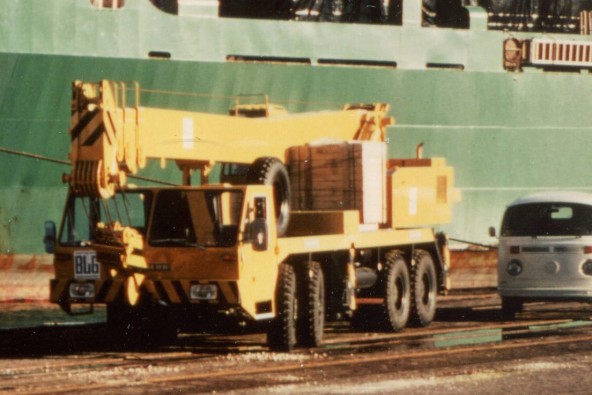
Harm van Dijk - Project manager of Boer B.V.
LT 1030 mobile crane
- Built in 1972
- 4 axles
- 240 hp chassis engine
- 28 m telescopic boom
- 34 m hoisting height
- 30 t load capacity
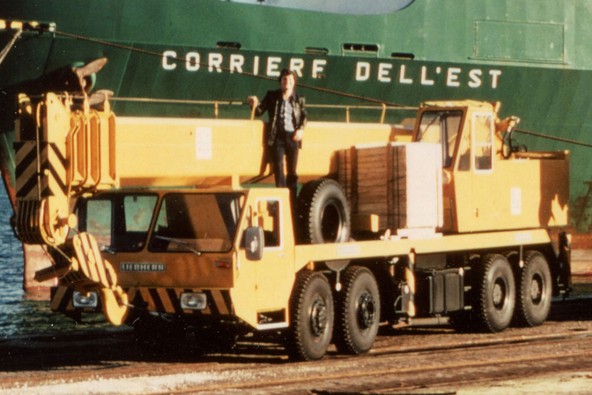
Harm van Dijk - Project manager of Boer B.V.
LT 1045 mobile crane
- Built in 1973
- 4 axles
- 313 hp chassis enginge
- 35 m telescopic boom
- 50 m hositing height
- 45 t load capacity
This article was published in the UpLoad magazine 01 | 2024.

